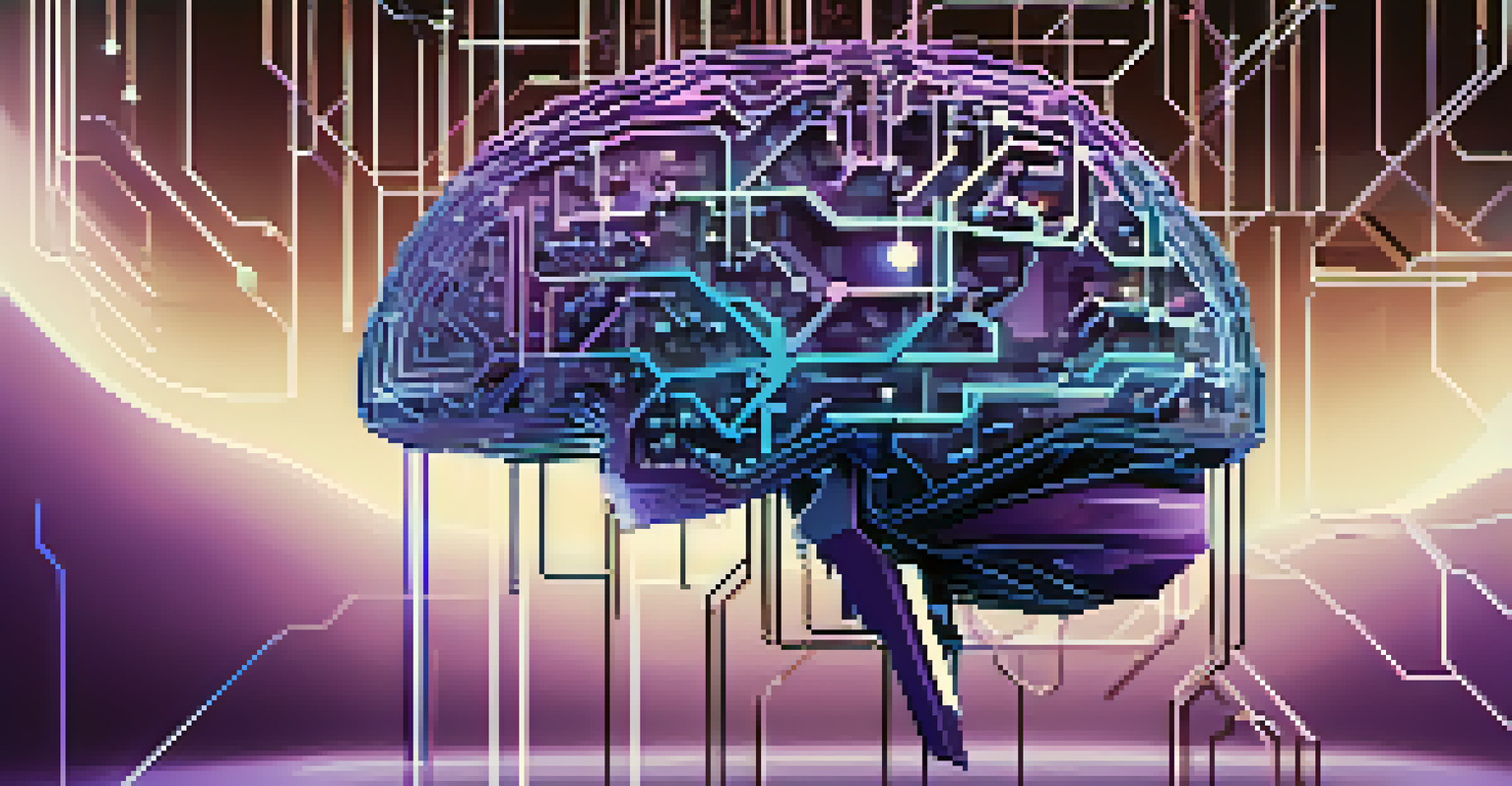The Role of AI in Ethereum's Scalability Solutions

Understanding Ethereum's Scalability Challenges
Ethereum is a decentralized platform that has gained immense popularity, but with its growth comes significant scalability challenges. The network often faces congestion during peak usage times, leading to slow transaction speeds and high fees. This bottleneck can deter new users and limit the platform's potential for widespread adoption.
The future of Ethereum is about building a network that is not only efficient but also inclusive, paving the way for broader adoption of decentralized technologies.
The need for scalability is essential to support an increasing number of decentralized applications (dApps) and smart contracts. Without effective solutions, Ethereum's capacity to handle transactions will continue to struggle, making it less competitive against other blockchain networks. Understanding these challenges lays the groundwork for exploring potential solutions.
As Ethereum continues to evolve, addressing scalability is not just a technical requirement; it's a crucial step towards realizing its vision of a decentralized future. This is where innovative technologies, like artificial intelligence (AI), come into play, offering promising avenues for improvement.
How AI Can Optimize Ethereum's Performance
AI has the potential to revolutionize the way Ethereum manages its resources, ensuring that the network operates more efficiently. By analyzing transaction patterns and user behaviors, AI can predict congestion points and suggest optimal times for transactions. This predictive capability can help users save on fees and improve overall transaction speeds.

Additionally, AI can facilitate smart contract execution by automating complex decision-making processes. This not only speeds up transactions but also reduces the likelihood of human error, making the network more reliable. Automated systems powered by AI can adjust to varying workloads, providing a seamless experience for users.
AI Enhances Ethereum's Scalability
Integrating AI can optimize Ethereum's performance by predicting congestion, automating smart contracts, and improving security.
Implementing AI-driven solutions can also lead to more robust security measures. By continuously monitoring network activity, AI can detect anomalies and potential threats in real-time, bolstering Ethereum's defenses against malicious attacks. This proactive approach to security is vital as the network scales and attracts more users.
AI-Powered Layer 2 Solutions for Ethereum
Layer 2 solutions are designed to enhance Ethereum's scalability by processing transactions off the main chain while still benefiting from its security. AI can play a pivotal role in optimizing these Layer 2 solutions, ensuring they operate smoothly and efficiently. By utilizing machine learning algorithms, these systems can improve transaction throughput and reduce latency.
AI is not just a tool; it’s a partner in innovation, enabling us to overcome challenges that once seemed insurmountable.
For instance, AI can help manage the distribution of transactions across different Layer 2 networks, balancing loads and preventing bottlenecks. This dynamic allocation of resources allows for a more responsive network that adapts to user demands in real-time. As a result, users experience faster transaction times and lower fees.
Moreover, AI can assist in the development of new Layer 2 protocols by analyzing data from existing systems. This analysis can inform developers about potential improvements and innovations, leading to the creation of more effective solutions. Ultimately, AI's integration into Layer 2 can significantly enhance Ethereum's overall scalability.
Enhancing User Experience Through AI
User experience is crucial for the adoption of any technology, and Ethereum is no exception. AI can enhance user experience by providing personalized recommendations and insights based on individual behavior. For example, AI algorithms can analyze a user's transaction history and suggest optimal times for trading or using dApps.
In addition to personalization, AI can streamline interactions with the Ethereum network. Chatbots and virtual assistants powered by AI can guide users through complex processes, making it easier for newcomers to navigate the platform. This accessibility encourages more people to engage with Ethereum and explore its capabilities.
User Experience Improved by AI
AI can personalize user interactions and streamline support, making Ethereum more accessible and engaging for new users.
Furthermore, AI can facilitate better customer support by analyzing user queries and providing relevant solutions. By automating responses to frequently asked questions, platforms can free up resources for more complex issues. This efficient support system ultimately leads to a more satisfying user experience.
AI and Ethereum's Governance Mechanisms
Governance is a vital aspect of Ethereum's ecosystem, ensuring that the network evolves in a manner that reflects the interests of its users. AI can enhance governance mechanisms by analyzing community sentiment and proposing adjustments based on data-driven insights. This approach allows for a more democratic decision-making process, as it considers a wider range of perspectives.
Moreover, AI can facilitate the voting process within the Ethereum community. By automating vote counting and analyzing patterns, AI ensures that the governance process is transparent and efficient. This transparency fosters trust among users, encouraging greater participation in governance activities.
As Ethereum continues to grow, incorporating AI into its governance can lead to more responsive and adaptive systems. The combination of AI and decentralized governance creates a dynamic environment where user needs are prioritized, ultimately benefiting the entire ecosystem.
The Future of AI in Ethereum's Development
Looking ahead, the role of AI in Ethereum's development is likely to expand further. As advancements in AI technology continue, we can expect more innovative solutions to emerge that address existing scalability challenges. This evolution will not only improve transaction speeds but also enhance overall network security and user experience.
Developers and researchers will increasingly harness AI to inform their work, utilizing data analysis to predict trends and potential hurdles. This data-informed approach will lead to more effective development strategies and quicker implementation of necessary upgrades. The synergy between AI and Ethereum's development promises a more agile and responsive network.
AI in Governance Boosts Transparency
Utilizing AI in governance can foster a more democratic decision-making process and enhance trust within the Ethereum community.
Additionally, the integration of AI can drive collaboration within the Ethereum community. By sharing insights and best practices, developers can work together to create a more robust ecosystem. This collaborative spirit, combined with AI's capabilities, can help Ethereum realize its vision of being a leading decentralized platform.
Challenges and Considerations of AI Integration
While the potential benefits of AI in Ethereum's scalability solutions are promising, there are also challenges to consider. One significant concern is the reliance on centralized data sources, which can undermine the decentralized ethos of blockchain technology. Ensuring that AI systems operate transparently and without bias is crucial to maintaining trust within the community.
Additionally, the implementation of AI requires careful consideration of resource allocation. Developing and training AI models can be resource-intensive, which may lead to increased costs for developers and users alike. Balancing these costs with the benefits of AI integration is essential for sustainable growth.

Lastly, as AI technology evolves, there will be ongoing ethical considerations regarding its use in governance and decision-making. Striking a balance between automation and human oversight will be vital to ensure that the Ethereum community remains engaged and empowered. Addressing these challenges head-on will be crucial for the successful integration of AI in Ethereum's future.